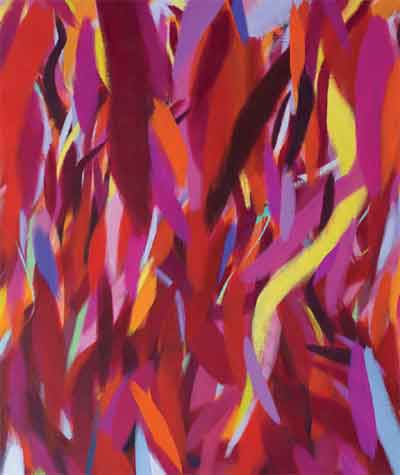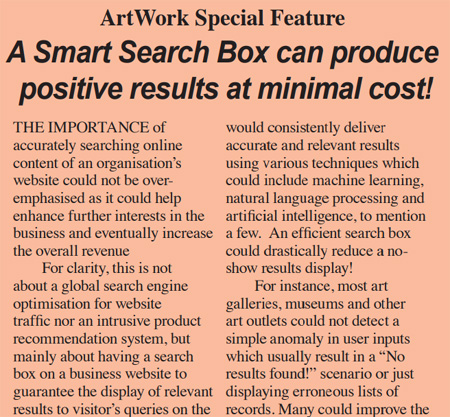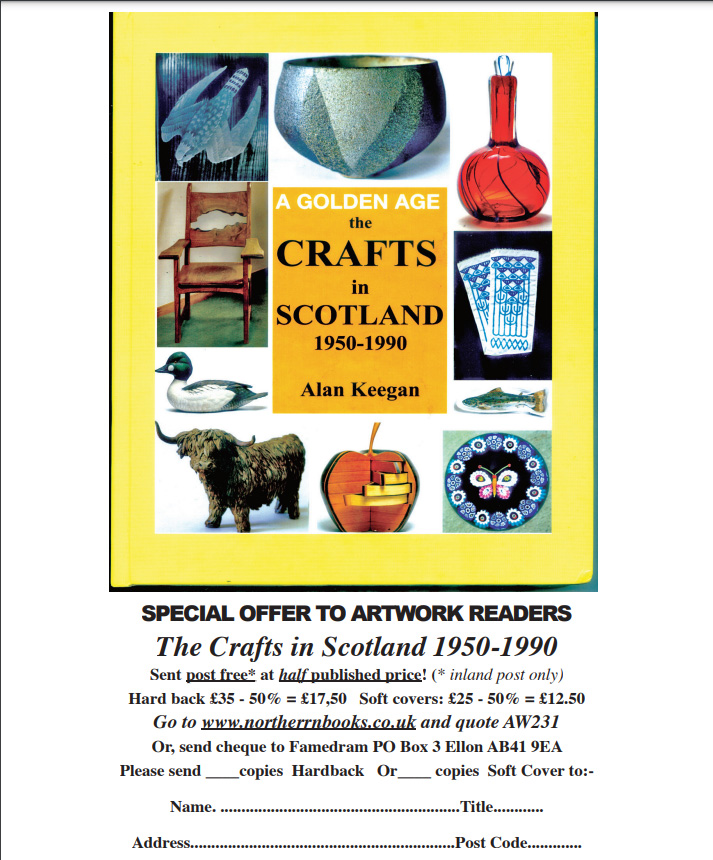
Hidden art of Palestine
Edinburgh's 'gallery street' is home to a new museum

Nabil Anani, "In Pursuit of Utopia #7"
EDINBURGH is set to be the location for the first museum dedicated to contemporary Palestinian art in Europe. The new museum, Palestine Museum Scotland, in the city's Georgian New Town, a UNESCO World Heritage Site and local arts hub, will occupy a roughly 1,100-square-foot space in an 1810 building at 13a Dundas Street, the former location of the Arusha Gallery.
It will be part of the Palestine Museum US, founded by Palestinian American businessman Faisal Saleh. Located in Woodbridge, Connecticut, it opened its doors in 2018, becoming the first museum in the Americas devoted to Palestinian art. The Connecticut location researches and preserves Palestinian history by showcasing the Palestinian experience, pre- and post-Nakba, in Palestine and in the diaspora, and features historical documents, photography, film, oral histories, mixed and digital media, literary arts, public lectures, and live performances.
Saleh was born in El-Bireh (Ramallah), to a refugee family from the pre-1948 Palestinian village of Salameh (Jaffa). Arriving in the United States in 1969 at the age of 17, he earned a BA in Economics and an MBA in Business Management and founded several companies.

Founder Faisal Saleh with the keys to the new Palestine Museum in Edinburgh's Dundas Street
Saleh says, "We chose Scotland as the first European location for our museum expansion because of the strong support provided by the Palestine solidarity movement. Many Scottish volunteers have stepped forward to welcome our new presence and offer to help manage and promote our programming.
"We are grateful for this support and look forward to collaborating with Scottish artists and cultural organisations".
The Edinburgh venue will be run by local volunteers, with Saleh overseeing the work remotely.
The Palestine Museum is an independent, non-political, non-religious, not-for-profit organisation. The official opening on May 17 is also the 77th anniversary of the Nakba, a historic moment in Palestinian history when nearly a million Palestinians were forced out of their homes to make way for the establishment of the state of Israel.
"Not one day passes without Palestinian exhibits and cultural events being cancelled", says Saleh. "We need our own venues and could not have found a more suitable location than 13a Dundas Street in Edinburgh. With so many galleries on Dundas Street, we could not be in better company. It is the best art address in the city".
The continuing repression, civilian punishment, witholding of aid and what many consider genocide, in Gaza has made Palestine a highly politically and sensitive subject, with galleries and museums reluctant to host Palestinian artists for fear of backlash.
There have been, and continue to be, the unexplained cancellations of Palestinian artists' shows, the rescheduling of book fairs, the raiding of bookshops and media silencing of Palestinian voices.
"Palestinian artists have long faced challenges in exhibiting their works in the Western world. We are determined to tell the Palestinian story to a global audience. If that means creating our own museums to do so, then so be it", says Saleh.
He hopes the museum will challenge dominant narratives and showcase the rich cultural heritage of Palestine, while providing a platform for under-represented voices, critical discussions and debates and promoting cultural understanding and diversity. He also believes the museum is "crucial in the face of Western media's persistent negative coverage of Palestine and the alarming cancellations of Palestinian events".
Saleh has announced intentions to expand to Chicago, Washington DC, and London over the next few years.
Palestine Museum Scotland's inaugural show will feature Palestinian art of the past decade in a variety of media by artists of different generations. Among the artists are 81 year old Nabil Anani, who is regarded as a key founder of the contemporary Palestinian art movement, Sana Farah Bishara, a Nazareth-born sculptor based in Haifa, and Samia Halaby, who won a special mention at last year's Venice Biennale. Recent works by Gaza-based artists, among them Mohammed Alhaj and Maisara Baroud will also feature.
Exporting works out of Palestine can be a challenging process so some artworks will be present as digital reproductions, explains Saleh. Palestine Museum US has previously sold works in NFT format to help fund artists who continue to face hardship and adversity due to the war – potentially NFT artworks and other non-traditional methods of display and sale will be entering this new collection.
Saleh says, "It is heart warming to experience the Scottish hospitality. Edinburgh, with its rich cultural heritage and international art scene, is the perfect location for our expansion. The city's August festivals provide a unique opportunity to showcase Palestinian arts and culture to a global audience.
"We believe that our presence in Edinburgh will not only promote Palestinian arts and culture but also contribute to a deeper understanding and appreciation of the Palestinian narrative. We look forward to working with our Scottish partners and friends to make this vision a reality".
FRANCES ANDERSON
Palestine Museum Scotland, Open: Wed-Sun 11-6, 13a Dundas Street, Edinburgh EH3 6QG scotland@falastin.museum







